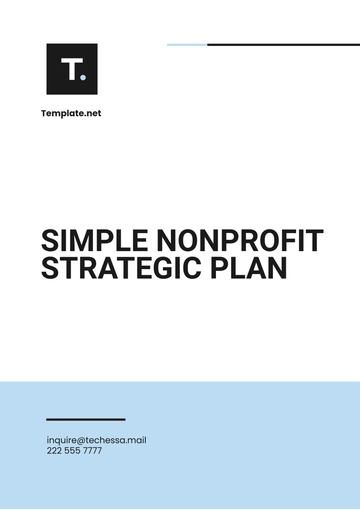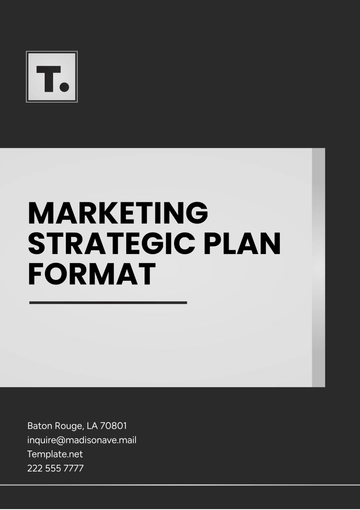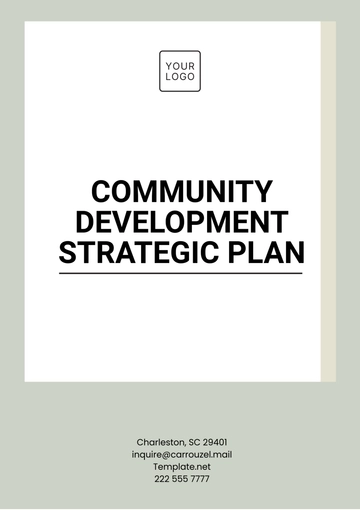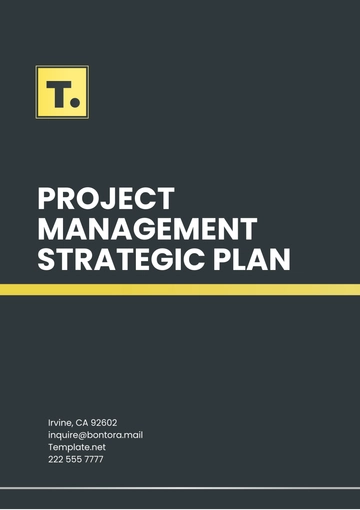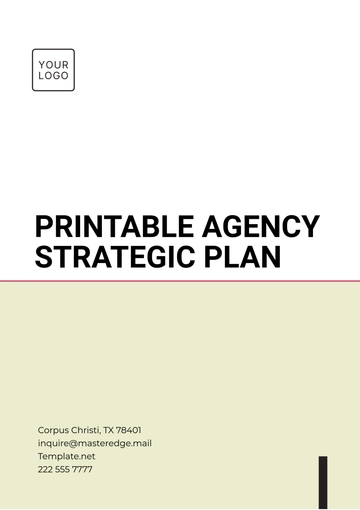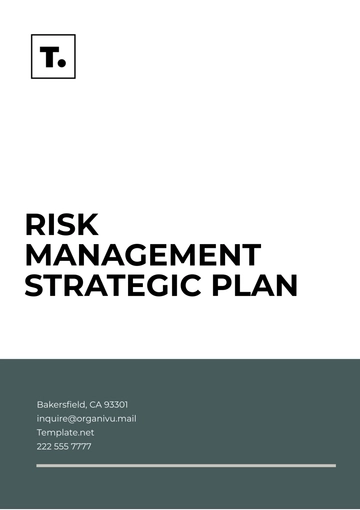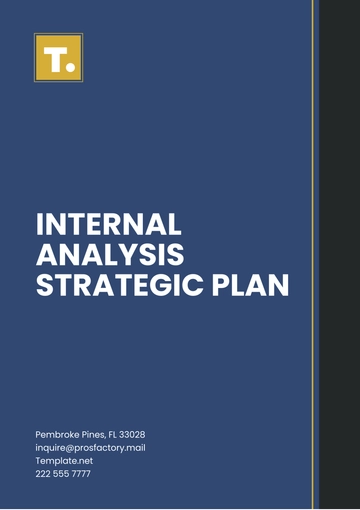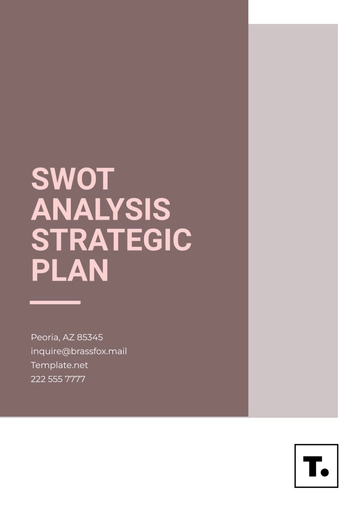Free Real Estate Investment Strategic Plan
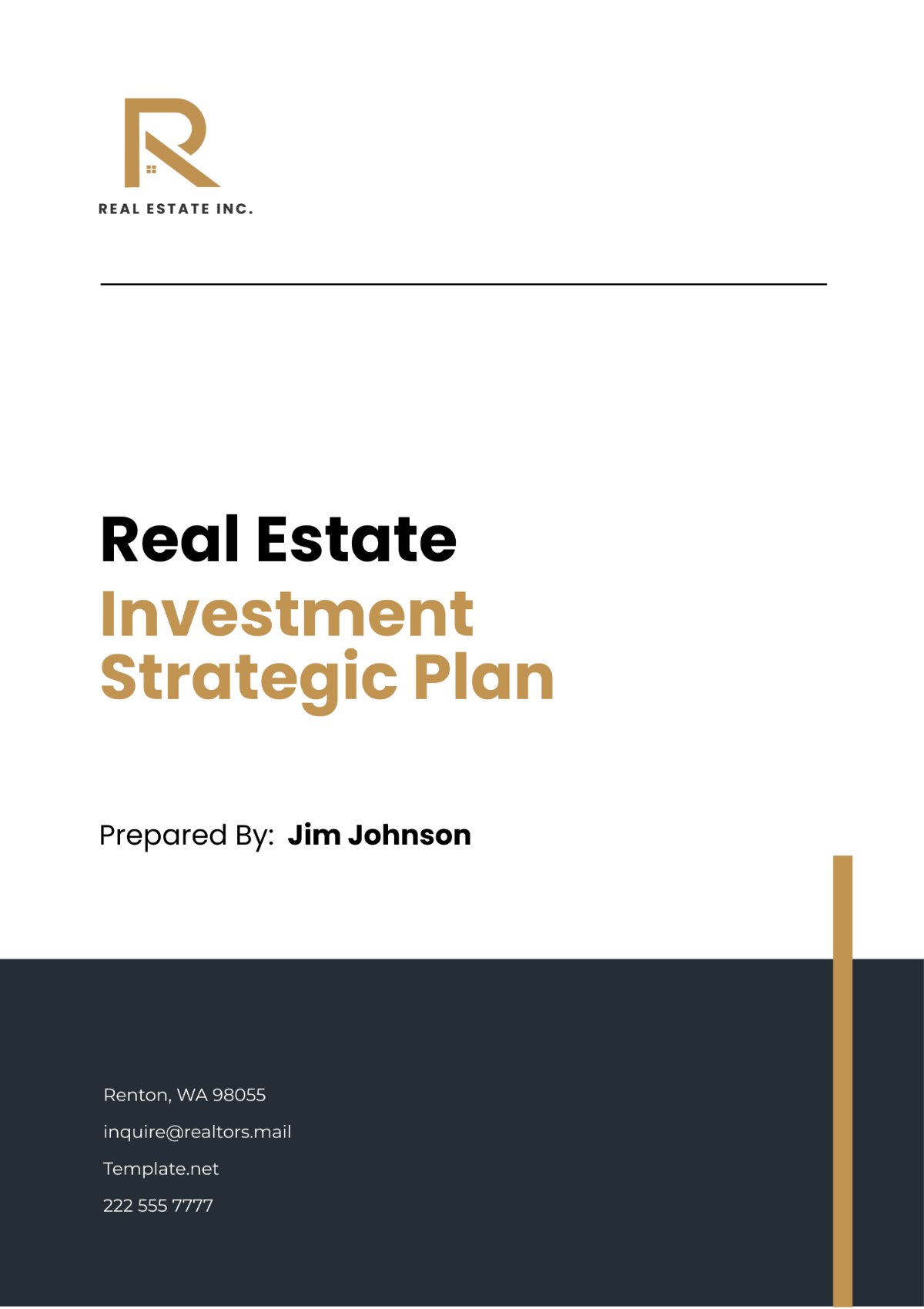
1. Executive Summary
In an ever-evolving real estate landscape, [Your Company Name] presents its Real Estate Investment Strategic Plan, a blueprint designed to navigate the complexities of the market with precision and foresight. This document underscores our ambition to unearth and capitalize on premier investment opportunities, fine-tune the performance of our assets, and diversify our portfolio to achieve unmatched growth and profitability. At the core of our strategy is a commitment to data-driven decisions, a practice that underpins our efforts to not only expand our market presence but also to secure a competitive advantage in a highly competitive sector.
Vision for Growth
[Your Company Name] is poised for expansion, targeting strategic acquisitions and fostering relationships that leverage market trends and insights. Our vision extends beyond mere profitability; it encompasses becoming a vanguard in the real estate investment realm, recognized for our innovative approaches and sustainable investment models. Through meticulous market analysis and the adoption of emerging technologies, we aim to set new benchmarks for success and investor satisfaction.
Commitment to Sustainability
Sustainability is not just a trend but a fundamental aspect of our strategic plan. [Your Company Name] is dedicated to investing in green real estate practices and technologies that not only minimize environmental impact but also promise long-term value creation for our stakeholders. By integrating sustainability into our core investment criteria, we are paving the way for a future where real estate contributes positively to both our planet and our portfolio's performance.
Strategic Diversification
Understanding the importance of risk mitigation, [Your Company Name] emphasizes the diversification of its investment portfolio. By strategically spreading investments across various property types, geographical regions, and market segments, we aim to ensure stability and growth even in the face of market fluctuations. This approach is designed to protect and enhance our investors' capital, positioning [Your Company Name] as a resilient and dynamic player in the global real estate market.
2. Market Analysis
The cornerstone of [Your Company Name]'s strategic prowess lies in its comprehensive market analysis, a meticulous process that empowers us to pinpoint the most promising investment opportunities. This analysis delves into the nuances of shifting market trends, regulatory developments affecting the real estate domain, and demographic shifts, ensuring a broad yet detailed understanding of the investment environment. A thorough SWOT analysis further enriches this section, providing a balanced perspective on the strengths, weaknesses, opportunities, and threats present in the current market. Mastery of these multifaceted dynamics is essential for adeptly maneuvering through the real estate investment landscape, positioning [Your Company Name] to capitalize on opportunities and mitigate risks with unparalleled precision.
A. Market Trends and Forecasts
Staying ahead requires an acute awareness of emerging trends and the ability to forecast future market movements. [Your Company Name] employs cutting-edge analytics and industry expertise to identify trends that will shape the future of real estate investing. From technological innovations to shifts in consumer behavior, our strategic planning incorporates these insights to ensure resilience and adaptability, enabling us to stay one step ahead of the curve.
Table 1: Emerging Real Estate Trends and Forecasts
Trend/Forecast | Description | Potential Impact | Forecasted Growth ([Year]-[Year]) |
|---|---|---|---|
Technological Innovations | Integration of AI and IoT in property management and smart homes. | Increased efficiency and demand for smart homes; higher operational savings. | 20% annual growth |
Work-From-Home Shift | A surge in remote work leading to higher demand for residential spaces with home offices. | Expanded residential market; decreased demand for traditional office spaces. | 15% annual growth |
Urban to Suburban Shift | Movement from city centers to suburban areas due to lifestyle changes and remote work possibilities. | Increased demand in suburban real estate; potential dip in urban property values. | 10% annual growth in suburban areas |
B. Legislative Landscape
The real estate market is heavily influenced by regulatory changes, and [Your Company Name] maintains a vigilant eye on legislative developments. Understanding the impact of these changes on investment opportunities is crucial for strategic planning. Our team analyzes the potential implications of new laws and regulations to navigate the legal landscape effectively, ensuring compliance while optimizing investment strategies. This proactive approach safeguards our interests and enhances our ability to exploit emerging opportunities.
Table 2: Key Regulatory Changes Impacting Real Estate
Legislation | Description | Impact on Real Estate Market | Effective Date |
|---|---|---|---|
Housing Affordability Act | Introduction of tax incentives for affordable housing projects. | Likely increase in development of affordable housing; potential market expansion. | [Month Day, Year] |
Green Building Standards | New environmental regulations for construction and property management. | Increased costs for compliance, but long-term benefits in sustainability and marketability of eco-friendly properties. | [Month Day, Year] |
C. Demographic Insights
Demographic shifts play a significant role in shaping the demand within the real estate sector. [Your Company Name] leverages comprehensive demographic analysis to anticipate changes in housing needs, preferences, and investor sentiment. This insight allows for strategic alignment with market demand, informing our investment decisions, and property development projects. By understanding and anticipating these shifts, [Your Company Name] positions itself to meet the evolving needs of the market, ensuring long-term success and sustainability.
Table 3: Demographic Shifts and Their Impact on Housing
Demographic Shift | Description | Impact on Housing Market | Strategic Response |
|---|---|---|---|
Aging Population | Increase in the population aged 65 and over. | Higher demand for retirement communities and accessible housing options. | Invest in age-friendly properties and amenities. |
Millennial Homeownership | Millennials entering the housing market as buyers. | Rising demand for starter homes and properties in tech-centric regions. | Develop affordable, tech-enabled housing solutions. |
Urbanization | Continued growth in urban populations, despite some shifts | Persistent demand for urban housing, especially rental properties catering to younger, mobile populations. | Focus on mixed-use developments in urban areas. |
3. Investment Strategy
[Your Company Name]'s investment strategy is meticulously crafted to align with our ambitious financial objectives and solidify our market stature. Emphasizing a multifaceted approach, it encompasses the judicious selection of property types, pinpointing regional hotspots for investment, determining the optimal timing for transactions, and setting realistic yet ambitious ROI expectations. Central to our philosophy is the diversification of risk, a strategy designed to fortify our investment portfolio against the unpredictability of market conditions, thereby ensuring its robustness and stability.
A. Property Type Selection
Choosing the right types of properties is crucial for our investment success. Our strategy involves a mix of residential, commercial, and industrial properties, each selected based on thorough market analysis and projected future trends. By balancing our portfolio across these categories, we aim to capitalize on the unique opportunities and risk profiles each property type offers, optimizing our potential for high returns while mitigating investment risks.
Table 1: Property Type Investment Analysis
Property Type | Market Demand ([Year]) | Projected ROI ([Year]-[Year]) | Risk Profile | Strategic Fit |
|---|---|---|---|---|
Residential | High | 8-12% | Moderate | Core investment focus due to stable demand and growth potential in urban and suburban areas. |
Commercial | Moderate | 6-10% | High | Selected focus on high-traffic urban centers and emerging business districts. |
Industrial | Increasing | 10-15% | Moderate to High | Strategic expansion into logistics centers near major urban areas due to e-commerce growth. |
B. Regional Focus and Timing
Identifying and focusing on regional investment hotspots allows us to maximize our investments' value. Our approach combines real-time market data, economic indicators, and demographic trends to select areas with high growth potential. Timing our acquisitions and sales is equally critical, relying on sophisticated market forecasts to buy low and sell high, ensuring maximum profitability and strategic portfolio expansion.
Table 2: Regional Investment Hotspots and Timing
Region | Growth Indicators | Optimal Investment Timing | Expected Market Growth ([Year]-[Year]) | Strategic Importance |
|---|---|---|---|---|
Urban Centers | High job growth, rising housing demand | 2025-2026 | 15-20% | High-density residential and commercial investments to capitalize on workforce expansion. |
Suburban Areas | Increased remote work, affordable housing demand | 2025-2027 | 10-15% | Residential developments catering to remote workers and families looking for more space. |
Industrial Zones | E-commerce expansion, logistics demand | Immediate to 2026 | 12-18% | Industrial and warehouse properties for logistics and distribution centers. |
C. Diversification and Risk Management
Diversification stands as the bedrock of our investment strategy, extending beyond property types to geographical locations and investment methods. By spreading our investments across diverse markets and strategies, we mitigate the risk of significant losses due to market downturns or localized economic setbacks. This comprehensive approach to risk management is key to maintaining steady growth and securing the long-term viability of our investment portfolio.
Table 3: Diversification Strategies and Risk Management
Diversification Dimension | Strategy Description | Expected Impact on Portfolio Risk | Implementation Plan |
|---|---|---|---|
Property Types | Invest in a balanced mix of residential, commercial, and industrial. | Lowers volatility, spreads risk. | Allocate investment capital according to risk-return profile of each property type. |
Geographic Locations | Target investments in a variety of regions, including emerging markets. | Mitigates impact of local economic downturns. | Identify regions with strong growth potential and lower market saturation. |
Investment Methods | Utilize a mix of direct property acquisitions, REITs, and real estate crowdfunding. | Diversifies exposure, allows for liquidity. | Allocate a portion of the portfolio to liquid real estate investments for flexibility. |
4. Property Acquisition
In the realm of real estate, the art and science of property acquisition serve as the bedrock of [Your Company Name]'s operational strategy. Our approach to acquiring properties is meticulously crafted to dovetail with our overarching financial and market goals, prioritizing rigorous due diligence above all. This process involves an exhaustive assessment of potential investments, thorough inspection routines, strategic negotiation methodologies, and the smooth execution of purchase agreements. By adhering to this disciplined acquisition strategy, we ensure the integrity of our investment portfolio and lay a solid foundation for future growth and profitability.
Due Diligence and Evaluation
Before proceeding with any acquisition, our team conducts an in-depth due diligence process, assessing each property's financial viability, legal standing, and physical condition. This comprehensive evaluation safeguards against unforeseen complications and ensures that every investment aligns with our strategic objectives. By leveraging the latest market data and analytics, we can accurately forecast potential returns and identify any risks that may impact the property's long-term value.
Negotiation and Deal Structuring
Effective negotiation and deal structuring are paramount to securing properties on favorable terms. Our seasoned negotiators employ a combination of market insight and tactical prowess to achieve outcomes that meet our investment criteria. This phase is critical for optimizing the financial structure of deals, including pricing, terms, and contingencies, thereby maximizing the potential for high returns and minimizing exposure to risk.
Transaction Execution and Integration
The final step in the property acquisition process involves the seamless execution of transactions and the integration of new properties into our portfolio. This includes coordinating with legal, financial, and operational teams to ensure a smooth transition and immediate commencement of asset management strategies. By maintaining a streamlined acquisition pipeline, we can quickly capitalize on emerging opportunities, enhancing our portfolio's diversity and resilience.
5. Management Strategy
Strategic asset management is pivotal to realizing the full potential of each property within [Your Company Name]'s portfolio. Our sophisticated management approach integrates state-of-the-art rent collection systems, meticulous property maintenance practices, and robust tenant relationship management, all underpinned by a rigorous framework of legal, financial, and risk management policies. This comprehensive strategy is crafted to not only safeguard but also augment the value of our assets, playing a crucial role in driving the overall performance and growth of our investment portfolio.
A. Property Maintenance and Upkeep
Central to our management strategy is the commitment to maintaining and enhancing the physical condition of our properties. Regular, preventative maintenance schedules, alongside timely upgrades and renovations, ensure our assets remain competitive and appealing in the market. This focus on upkeep not only preserves the value of our investments but also enhances tenant satisfaction and retention, directly impacting our bottom line positively.
B. Tenant Relationship Management
At [Your Company Name], we recognize that strong tenant relationships are the backbone of successful property management. Our approach is built on clear communication, responsiveness to tenant needs, and the provision of services that enhance the living and working environments of our properties. By prioritizing tenant satisfaction, we foster loyalty, minimize turnover, and maintain high occupancy rates, all of which contribute to the steady revenue stream essential for long-term investment success.
C. Legal, Financial, and Risk Management
Navigating the complex legal and financial landscapes of real estate investment demands a proactive and informed management approach. [Your Company Name] employs comprehensive strategies to ensure compliance with all regulatory requirements, optimize financial performance, and mitigate risks associated with property ownership and management. Our meticulous attention to these areas ensures the sustainability and profitability of our investment activities, safeguarding our assets against unforeseen challenges and ensuring their continued contribution to our portfolio's success.
6. Investment Portfolio Diversification
At [Your Company Name], we embrace diversification as a fundamental principle to fortify our investment foundation against the unpredictable tides of the market. Our strategy to diversify spans across a spectrum of property types, geographical territories, and investment methodologies. This broad-based approach is designed to dilute the risks associated with market volatility, thereby securing a more stable and progressively growing investment portfolio. Through this strategic diversification, we aim not just to protect, but also to enhance the value and yield of our investments, ensuring resilience and sustained growth in an ever-changing economic landscape.
A. Property Type Diversification
Our portfolio strategy intentionally spreads investments across residential, commercial, industrial, and special-purpose properties. This diversity allows us to leverage the unique advantages and counterbalance the risks of each sector. By investing in a wide array of property types, we ensure that a downturn in one market segment does not disproportionately affect our overall portfolio, thus maintaining steady income streams and capital appreciation opportunities.
Table 1: Property Type Diversification Strategy
Property Type | Advantages | Risk Mitigation | Expected Contribution to Portfolio |
|---|---|---|---|
Residential | Stable income; high demand | Less volatile in economic downturns | High stability and continuous cash flow |
Commercial | Higher income potential; long-term leases | Subject to economic cycles; tenant dependency | Higher yield, though cyclical |
Industrial | Growing e-commerce demand; long-term leases | Location and market-specific risks | Increasing demand contributing to growth |
Special-Purpose | Niche market; unique investment opportunities | Higher risk due to limited use | Diversification and potential high returns |
B. Geographic Diversification
Understanding that location is key to real estate success, [Your Company Name] strategically selects properties in a variety of regions. This includes burgeoning urban centers, stable suburban locales, and select rural areas with potential for growth. Geographic diversification not only hedges against local and regional economic fluctuations but also capitalizes on the growth dynamics of different areas, optimizing the balance between risk and reward in our portfolio.
Table 2: Geographic Diversification Strategy
Region Type | Characteristics | Strategic Importance | Portfolio Impact |
|---|---|---|---|
Urban Centers | High job growth, dense population | High demand for residential and commercial | Stability and growth potential |
Suburban | Growing due to remote work, affordability | Expansion in residential demand | Growth and lower volatility |
Rural Areas | Selected areas with growth potential | Long-term appreciation opportunities | High potential returns with moderate risk |
C. Investment Method Diversification
To further solidify our diversification strategy, [Your Company Name] employs a mix of direct property investments, real estate investment trusts (REITs), and innovative investment vehicles such as real estate crowdfunding. This blend of investment methods provides flexibility, liquidity, and access to a broader range of opportunities. It allows us to adjust our exposure to various market conditions dynamically, ensuring a robust investment portfolio capable of withstanding market challenges while capturing growth across the real estate spectrum.
Table 3: Investment Method Diversification Strategy
Investment Method | Description | Benefits | Strategic Role in Portfolio |
|---|---|---|---|
Direct Investments | Direct ownership of property | Control over asset, direct income | Core of portfolio, high control |
REITs | Investment in real estate through stocks | Liquidity, exposure to diverse real estate | Flexibility and risk distribution |
Crowdfunding | Collective investment in real estate projects | Access to unique projects, lower entry cost | High-risk, high-reward opportunities |
7. Sustainable Growth
Our strategic vision is anchored in the commitment to not only expanding our footprint through astute reinvestment and market penetration but also in pioneering sustainability within our operations. By integrating green practices and leveraging cutting-edge analytics and technology, we aim to redefine industry standards, positioning ourselves at the forefront of eco-conscious investment. This dedication ensures our growth is not just robust but also responsible, aligning with the broader goals of environmental stewardship and social responsibility.
A. Reinvestment and Market Penetration
Our approach to sustainable growth emphasizes the strategic reinvestment of profits back into the core business, fueling innovation and expansion. Simultaneously, we actively seek opportunities to enter new markets with high growth potential, adapting our strategies to meet the unique challenges and opportunities each presents. This dual focus ensures that [Your Company Name] maintains a dynamic presence in the real estate market, continuously evolving to meet the demands of the future.
Table 1: Strategies for Reinvestment and Market Penetration
Strategy | Description | Expected Outcome |
|---|---|---|
Reinvestment in Core Operations | Allocating a significant portion of profits towards enhancing operational capacities. | Increased efficiency and capacity for expansion. |
Market Research and Analysis | Investing in comprehensive market research to identify new markets with high growth potential. | Informed decision-making on market entry and investment allocation. |
Local Partnerships and Alliances | Forming strategic partnerships with local businesses and stakeholders in new markets. | Accelerated market penetration and localized strategy optimization. |
B. Embracing Green Practices
Environmental sustainability is a key pillar of our growth strategy. [Your Company Name] is committed to adopting green building practices, from the materials we use in construction to the energy-efficient systems we install in our properties. These efforts not only reduce our environmental footprint but also appeal to a growing segment of eco-conscious consumers and investors, driving demand and enhancing the long-term value of our portfolio.
Table 2: Green Practices and Sustainability Initiatives
Practice | Implementation Method | Environmental Impact |
|---|---|---|
Sustainable Construction | Utilizing eco-friendly materials and sustainable construction techniques. | Reduced carbon footprint and resource conservation. |
Energy Efficiency | Installing energy-efficient systems and renewable energy sources in properties. | Lower energy consumption and operational costs. |
Green Certifications | Pursuing certifications such as LEED or BREEAM for new and existing properties. | Enhanced market value and appeal to eco-conscious tenants and investors. |
C. Leveraging Technology and Analytics
The use of advanced analytics and technology is integral to our sustainable growth strategy. By harnessing these tools, [Your Company Name] gains insights into market trends, operational efficiencies, and investment opportunities, enabling data-driven decision-making that supports our growth objectives. This strategic use of technology ensures that we remain competitive in a rapidly evolving industry, positioning [Your Company Name] as a visionary leader in sustainable real estate investment.
Table 3: Technology and Analytics Utilization
Technology/Analytics Use | Purpose | Strategic Impact |
|---|---|---|
Market Trend Analysis | Employing advanced analytics to monitor and predict real estate trends. | Enhanced agility in responding to market changes and seizing opportunities. |
Operational Efficiency Tools | Integrating technology solutions for property management, energy use, and maintenance. | Improved operational efficiencies and cost savings. |
Investment Opportunity Analysis | Using data analytics to evaluate potential investments and forecast returns. | Data-driven decision-making for higher ROI and reduced risk. |
8. Emerging Trends
Staying ahead of emerging trends is crucial for maintaining a competitive edge. Our strategy includes monitoring and adapting to developments such as the demand for sustainable housing, the rise of smart home technology, evolving workplace requirements, and changing tenant expectations. This proactive approach ensures that [Your Company Name] remains relevant and influential in a rapidly changing market.
9. Financial Targets, Investment Criteria, and Exit Strategies
At [Your Company Name], our commitment to excellence is underpinned by a rigorous financial framework, designed to steer our trajectory towards industry leadership. Our strategy encompasses well-defined financial targets, stringent investment criteria, and carefully planned exit strategies. This structured approach enables us to forecast financial performance accurately, assess investments meticulously, and plan exits with precision, aligning every decision with our overarching objectives and ensuring sustainable growth and profitability.
A. Financial Targets
Table 1: Financial Targets Overview
Target Category | [Year] Goals | [Year] Goals |
|---|---|---|
Revenue Growth | 10% | 15% |
ROI | 8% | 12% |
Asset Value | 20% | 30% |
B. Investment Criteria
Table 2: Investment Criteria Checklist
Criteria | Thresholds / Benchmarks |
|---|---|
Market Potential | Top 30% of emerging markets |
Financial Health | Debt-to-Equity Ratio < 2:1 |
Sustainability & Ethics | LEED Certification or equivalent |
C. Exit Strategies
Table 3: Exit Strategy Framework
Type | Ideal Conditions | Expected Outcome |
|---|---|---|
Sale | Market is on an upswing, high demand. | Maximize returns, reallocate capital. |
Lease | Stable market, consistent demand. | Steady income stream, maintain asset control. |
Refinancing | Low-interest rates, high property value. | Access capital for reinvestment, leverage equity growth. |
These tables encapsulate the strategic financial planning integral to [Your Company Name]'s mission to cement its position as a leader in the real estate investment sector. By setting ambitious yet achievable financial targets, adhering to strict investment criteria, and planning for strategic exits, we lay the groundwork for informed decision-making and strategic agility. This comprehensive financial strategy ensures that each investment contributes positively to our long-term objectives, maximizing returns while managing risk effectively.
10. Performance Metrics
[Your Company Name] harnesses the power of key performance indicators (KPIs) to navigate its strategic course with precision and insight. Our meticulously selected KPIs serve as the navigational stars by which we chart our progress, enabling us to measure ROI, monitor capital growth, assess rental yields, track occupancy rates, and evaluate tenant satisfaction. This vigilant oversight allows us to fine-tune our strategies in real-time, ensuring that every step we take is aligned with our overarching goals of growth, sustainability, and market leadership.
A. ROI and Capital Growth
Table 1: ROI and Capital Growth Metrics
Metric | Target / Benchmark |
|---|---|
Return on Investment (ROI) | ≥ 8% annually |
Capital Growth | ≥ 5% annually |
B. Rental Performance
Table 2: Rental Performance Metrics
Metric | Target / Benchmark |
|---|---|
Rental Yield | ≥ 6% |
Occupancy Rate | ≥ 95% |
C. Tenant Satisfaction and Operational Efficiency
Table 3: Tenant and Operational Efficiency Metrics
Metric | Target / Benchmark |
|---|---|
Tenant Satisfaction Index | ≥ 80% satisfaction |
Operational Efficiency | ≤ 35% of rental income |
These tables offer a structured approach to tracking the performance of [Your Company Name]'s investment portfolio, providing a clear, quantifiable measure of our strategic effectiveness. By adhering to these KPIs, we are equipped to make informed decisions that enhance our operational performance, improve tenant relations, and optimize financial outcomes. Continually monitoring and adjusting our strategy based on these metrics ensures that [Your Company Name] remains at the forefront of the real estate investment industry, poised for sustainable growth and enduring success.
- 100% Customizable, free editor
- Access 1 Million+ Templates, photo’s & graphics
- Download or share as a template
- Click and replace photos, graphics, text, backgrounds
- Resize, crop, AI write & more
- Access advanced editor
Template.net's Real Estate Investment Strategic Plan Template, fully editable in our Ai Editor Tool, is your key to a strategic approach to property investing. This customizable template guides you through market analysis, funding strategies, and profitability forecasts. User-friendly and comprehensive, it streamlines your planning process, enhancing your investment acumen and leading you closer to your financial goals. Start mapping your real estate investment journey today.

